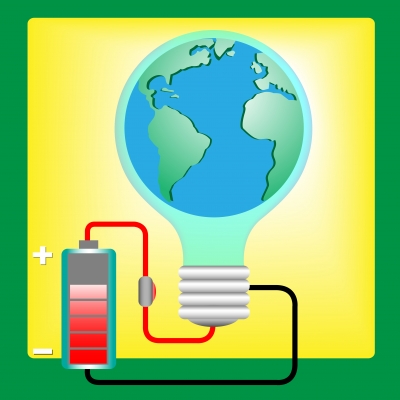Battery Technology Developments to Excite Electronic Device Users
Batteries are a basic component of electronic devices that couldn’t seem to advance as quickly as other technologies like high resolution displays and camera sensors, mobile device processors, and biometric sensors. For years, the world has been stuck with the same old lithium-ion and lithium-polymer batteries. Thankfully, things are about to change.
Recent research and development efforts have yielded interesting breakthroughs in the area of batteries. The time when there will be reasonable enough power to run small electronic devices is nearing. Smartwatches, tech in jewelry, and the ambitious “smart ring” should have sufficient battery juice to last long enough to be more useful. Similarly, noisy generators may no longer be that necessary as scalable “flow batteries” take their place.
Pomegranate-Inspired Battery
The inventors at Stanford University and the SLAC National Accelerator Laboratory of the United States Department of Energy have found a way to address the difficulties encountered with lithium-ion batteries. This is through a pomegranate-resembling design of electrodes wherein silicon nanoparticles are lumped within a hard carbon rind similar to how seeds in a pomegranate are clustered.
What this design does is to help enable the production of lighter and more compact but more powerful batteries by making use of silicon anodes. According to Yi Cui, a Stanford professor involved in the R&D work, their experiments showed that the pomegranate-like design retains a very high amount of efficiency even after a thousand charging and discharging cycles. This is definitely a big boon to mobile consumer products like smartphones, tablet computers, as well as electric cars.
Silicon anodes are not new and they offer the advantage of storing around 10 times more energy in comparison to what standard graphite anodes in current rechargeable lithium-ion batteries are using. However, they pose the problems of swelling and quickly degenerating as they are charged. Also, these brittle silicon anodes undergo a chemical reaction with the electrolyte in batteries, producing a gunk that covers the anode and reduces its efficiency.
For years, researchers have tried to address the breakage and swelling problems through the use of silicon nanowires that would encase the silicon anode nanoparticles to allow them enough space for swelling and shrinking. The recent “pomegranate” breakthrough builds on this idea.
Doubling the Lithium-Ion Battery Performance
University of Limerick researchers have also achieved a battery tech feat that is said to revolutionize the electric car market and double the capacity of batteries used in mobile gadgets. Published by the journal Nano Letters, the University of Limerick battery tech breakthrough is about a new germanium nanowire-based anode that can significantly raise the capacity and useful life of lithium-ion batteries.
This is very similar to what the Stanford University inventors and researchers have achieved. It is mainly about replacing the less efficient graphite with germanium and employing nanotechnology to piece the tech together. The University of Limerick researchers also make use of nanowires as they restructure germanium into a stable battery material. Compared to the Stanford development, though, this one is guaranteed by the developers to be low-cost and scalable. It is also said to require low power for production.
Non-Flammable, Non-Exploding Batteries
Are you one of those who’ve become paranoid of touching your lithium-ion powered electronic devices for the fear of battery explosion or combustion? Your direful days may soon be over as University of North Carolina researchers made another breakthrough in battery technology. To address the flammability problem of lithium-ion batteries, they experimented on using perfluoropolyether (PFPE) in lieu of the highly flammable organic solvent in a battery’s electrolyte.
PEPE is generally used as an industrial lubricant but it has a structure similar to the solvent used in lithium-ion batteries. The researchers tried making lithium-ion batteries work with PEPE and have found positive and promising results. More tests will have to be undertaken to ascertain the viability of using PEPE in batteries for stable commercial or industrial use.
Flow Battery Technology
Primus Power, a California-based startup, recently raised $20 million to pursue a plan to bring flow batteries to the market. These rechargeable batteries provide the advantage of being highly scalable. Users can size them up or down depending on the amount of power they need. They are bulky and not meant to be portable but they are intended to address high power needs in one location.
Primus Power’s flow battery, as the company asserts, makes use of nontraditional components. It employs metal electrodes instead of the felt version. These metal electrodes are more expensive but they offer the benefit of better conductivity and the ability to provide more power. Also, instead of the traditional two-tank flow battery design, Primus Power’s product is built in just one tank with different outlets to segregate and facilitate the flow of the electrolyte to the cell.
Flow batteries are generally aimed at large-scale use, often for load balancing and the storage of energy from renewable sources. They are also used for uninterruptible power systems, power conversions as well as for electric vehicles. They are deemed advantageous for electric cars because of faster charging, through the replacement of the electrolyte.
Improvements in battery technology are definitely necessary especially in the age of mobile electronics and mobile computing. The need for higher battery capacities and better performance is something that really needs attention. Thankfully, we are now seeing some significant achievements. Let’s just hope that they can be commercialized or made available to the mass market soon enough.


